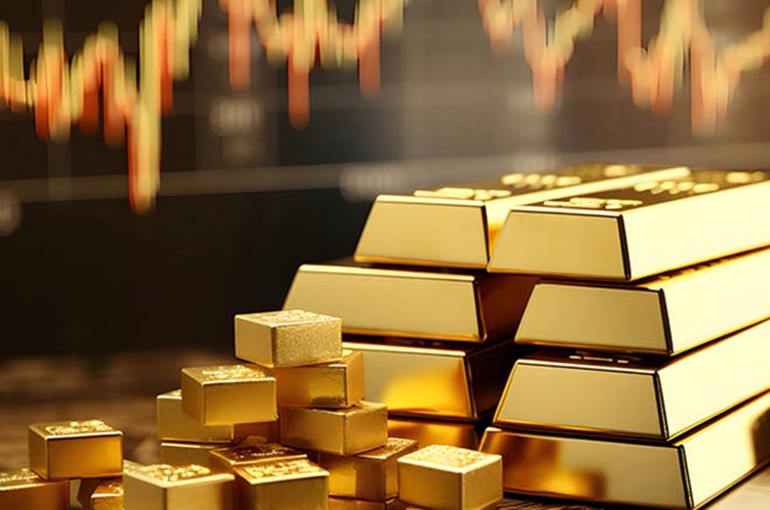 Gold’s Price Volatility Mirrors Deep Global Financial Shift
Gold’s Price Volatility Mirrors Deep Global Financial Shift(Yicai) Nov. 19 -- The sharp swing in the price of gold last month sparked debate about its safe-haven status. But rather than a sign of gold’s fragility, volatility points to changes in the global financial system, revealing a precious metal fast evolving from a hedging option into a key portfolio pillar.
Gold’s price swing in October -- surging above USD4,000 per ounce before plunging over 10 percent in a matter of days -- stemmed from a liquidity squeeze, not eroding fundamentals. During global time of stress, investors sell highly liquid assets to free up cash. Gold, the world’s most liquid non-sovereign collateral, fits that bill perfectly. What happened in October echoes the reaction to liquidity shocks last year and in 2023 and 2020.
System-wide factors amplified the effect, including redemptions of exchange traded funds, margin pressure, US dollar funding pressures in Asia, and election-linked portfolio adjustments. Yet beneath the volatility, demand fundamentals remained strong, with central bank purchases, supply constraints, and long-term reserve diversification ongoing. Gold’s swings were a symptom of macro-financial stress, not a loss of confidence in the metal itself.
Three Structural Shifts Reshaping Gold’s Role
October’s episode underscores profound changes in gold’s long-term trajectory, based on three factors in particular. The first is the end of the “risk-free” sovereign myth.
US Treasuries are losing their risk-free appeal as the country’s fiscal health deteriorates. Record debt, chronic deficits, and rising volatility have pushed investors to seek assets without issuer risk. Gold is unique in meeting this need, and has gained luster as trust in sovereign paper has declined.
Secondly, there is an ongoing shift toward a more multipolar global monetary regime. Central banks have been on the most intense gold-buying spree in history, accumulating over 2,000 tons since 2022, led by China, India, Türkiye, and the Gulf states. Gold’s neutrality makes it unmatched as collateral for bridging rival blocs in a less dollar-centric world.
Thirdly, physical assets have become more important amid the recent global re-industrialization wave focused on artificial intelligence, electrification, grid modernization, defense, and resilient supply chains. Gold, with its credibility, liquidity, and sovereignty, has become a strategic reserve, supporting the next cycle of industrial growth as states and enterprises chase resource independence.
Rethinking Gold Cycles in a Fragmented World
Old market logic framed gold bull runs as short-lived and capped by macro stability. This has changed amid today’s persistent geopolitical frictions, fiscal uncertainty, volatile energy transitions, and fractured supply chains. Gold now reprices in multi-year phases, with pullbacks acting as consolidation points rather than reversal signals.
Regarding the outlook for the next five years, institutional investors are recalibrating their approaches to asset allocation. A good example is Morgan Stanley’s 60/20/20 framework (equities for growth, bonds for liquidity, gold for credibility). This shift responds to eroding diversification benefits, driven by rising equity-bond correlations, inflation volatility, and geopolitical and fiscal risks.
Currently, institutional gold allocations hover around 1 percent. Boosting this to 5 percent could absorb years of mined supply, supporting prices through structural demand rather than speculation.
There are three potential scenarios. First, gold trades between USD3,500 and USD4,500 as volatility normalizes, with ongoing strategic demand amid uncertainty. Second, geopolitical fragmentation and reserve diversification drive prices to USD4,500 to USD5,500, fueled by institutional inflows.
The third scenario involves systemic shock, in which a fiscal or geopolitical crisis pushes gold above USD5,500, launching a structural bull market as it becomes the collateral of last resort.
October’s volatility was not a threat to gold. It was a sign of global financial evolution. As instability, liquidity constraints, and declining credibility reshape markets, gold is no longer just a defensive asset. It is fast becoming a cornerstone of portfolio and reserve construction, anchoring the future of institutional finance.